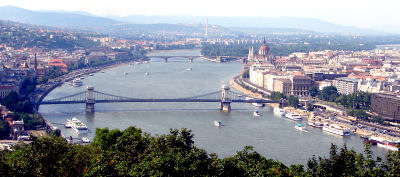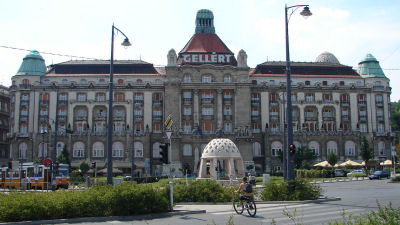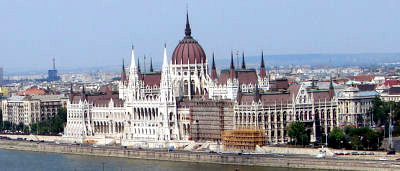From Prague, Budapest seems a long time ago, but it was only a week. The cities of Buda and Pest on either side of the Danube were merged after bridges were built to connect them.

Buda is a naturally fortified area with hills and the Danube protecting her – though they weren’t terribly effective as Ghengis Khan, Attilla the Hun, the Ottoman Turks, and the Austrians occupied the city for most of the last millenium. The Magyars migrated to the area and formed Hungary in 896 A.D. under King Stephen [Saint Stephen]. Probably the most amazing fact about Hungary is that it maintained its cultural individuality in spite of continuous occupation of one sort or another from 1200-ish until 1989, partly due to a unique language totally unlike any other European tongues. Buda is the ancient city with Castle Hill and the Medival walled town.

Our hotel in Buda is also a Spa – with hot springs baths used since the Ottoman occupation during the 14th century.


There was much to see in Budapest – like any other old European city – streets lined with palatial residences – many still showing the signs of WWII and the Communist years, many others renovated to their ancient splendor. One telling building, the Parliment dominates the Pest shore of the Danube.

I doubt that there is any more blatant example of the indulgence of the monarchal period of European history than this structure. Inside, every surface is marble, gold, gilt decoration, statues, heralds, tapestries. It’s staggering to imagine that such a building would be built. It was created for the 1896 celebration of Hungary’s millenium, even though they were part of the Austrian Hapsburg Empire. Many of the statues and huge monuments in the city were built for that celebration – and eerie prelude to the century that followed – WWI, the Arrow Cross [Hungary’s Nazi Party], WWII, and Communism. As terrible as the fate of Eastern Europe during those years, this building testifies to the excesses of the Monarchs that were replaced by these waves of turbulent political change. On the tourist circuit, one mostly sees the palaces and churches of that former time, and hears terrible stories of what finally ended the domination of Europe by the Church and the Nobility, but I expect that the commoners also suffered under the Kings supporting the Palaces and Cathedrals.
That said, Budapest is a magnificent place – well along the path of restoring its rich history. Currently, it is governed by the Socialist Party. But recently, the head of State made a speech to his Party Congress [he thought in private] admitting that many of his public promises were not true – a "vulgar" speech. It was secretly taped and published in all the papers. So now, the word on the streets is that his days are numbered and that a popular leader of the Democratic Party will win the next election. We humans vacillate between two great fears – on the freedom side, a fear of the freedom to fail, and on the government control side, a fear of being exploited. Both anxieties are at high levels in Hungary. Gone is the security of Communism – bringing new fears of personal failure. On the other hand, the possibility of government expoitation remains a near memory. I had the sense that their newly found freedom is both exciting and terrifying.
Amazing! Thanks for sharing.
Thanks for the great pictures and your narration.